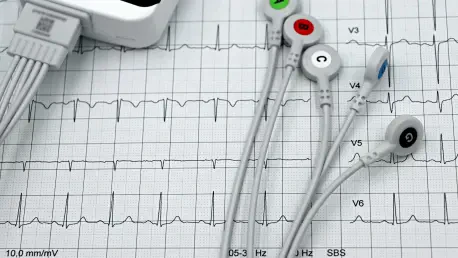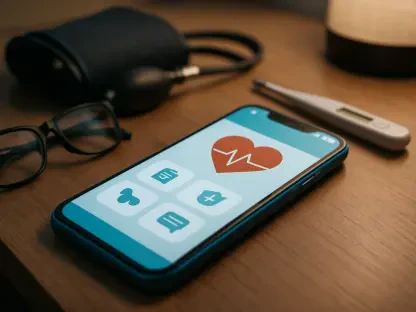In a landscape where cardiovascular health remains a pressing concern for millions, Boston Scientific has emerged with groundbreaking updates about its Watchman device, a left atrial appendage closure (LAAC) system designed to mitigate stroke risk in patients with atrial fibrillation (AF). This technology serves as a lifeline for those unable to sustain long-term blood thinner regimens, presenting a viable alternative that could transform lives. During a recent investor presentation, company leaders outlined a forward-thinking strategy that not only focuses on enhancing the device itself but also on expanding its reach and impact. With a next-generation version in development, alongside plans for market growth and clinical advancements, Boston Scientific is positioning itself at the forefront of innovation in cardiology. This ambitious roadmap reflects a deep commitment to addressing unmet medical needs and improving patient outcomes on a global scale.
Innovation and Product Evolution
Advancing Device Design for Diverse Needs
Boston Scientific is diligently crafting a next-generation iteration of the Watchman device, as revealed by Angelo De Rosa, global president of the Watchman business, during a recent investor briefing. This updated version is engineered to provide enhanced stability and adaptability, catering to a broader spectrum of patient anatomies in the left atrial appendage, a critical area where blood clots can form in AF patients, heightening stroke risk. The company has set a timeline for initiating a U.S. investigational device exemption (IDE) study in 2026, with an anticipated market launch slated for late 2027 or early 2028. Such a schedule underscores a meticulous approach to clinical validation, ensuring that the device meets stringent safety and efficacy standards before reaching healthcare providers. Building on the foundation of the third-generation Watchman FLX Pro, which secured FDA approval in 2023, this development signals a significant leap forward in personalized stroke prevention solutions.
Engineering Challenges and Patient Impact
The journey to perfecting the next-generation Watchman device involves overcoming complex engineering challenges to accommodate the anatomical variations among patients. Boston Scientific aims to refine the device’s design to ensure a secure fit and optimal performance, reducing procedural risks and enhancing long-term outcomes for individuals with AF. This focus on customization aligns with the broader goal of minimizing complications during implantation and improving recovery times. The planned IDE study will play a crucial role in gathering data on how well the device performs across diverse patient groups, providing valuable insights for regulatory approval. By prioritizing these advancements, the company is not only addressing current limitations but also setting a new benchmark for what LAAC systems can achieve. The potential to impact millions of lives hinges on the success of these efforts, marking a pivotal moment in the evolution of stroke prevention technology.
Market Expansion and Clinical Research
Targeting a Growing Market Opportunity
The market for the Watchman device is poised for substantial growth, with Angelo De Rosa estimating its value at $2 billion and projecting an impressive annual growth rate of 20%. This optimism is driven by the possibility of expanding the device’s indications beyond its current approval for patients limited to short-term blood thinners. Through the Champion-AF study, expected to yield results in the first half of 2026, Boston Scientific is evaluating the device’s effectiveness compared to long-term anticoagulants, potentially opening access to a much larger patient population. Success in this trial could increase the eligible patient base from 5 million to over 20 million by 2030, a transformative shift that would also influence reimbursement policies and clinical guidelines. Such expansion efforts highlight the company’s strategic vision to redefine stroke prevention options and meet the needs of a rapidly growing demographic at risk for AF-related complications.
Clinical Trials as a Catalyst for Change
Clinical research remains a cornerstone of Boston Scientific’s strategy to broaden the Watchman device’s applications. The ongoing Champion-AF study is designed to provide robust evidence on whether LAAC can serve as a viable alternative or complement to traditional blood thinners for a wider range of patients. With data anticipated in early 2026, the results could reshape how healthcare providers approach stroke risk management in AF cases, potentially leading to updated treatment protocols across regions. Beyond immediate patient benefits, positive outcomes may encourage payers to adjust coverage policies, facilitating greater access to the device. This research also underscores a commitment to evidence-based innovation, ensuring that any expanded use of the Watchman is grounded in solid scientific findings. The implications of these trials extend far beyond a single product, setting the stage for broader advancements in cardiovascular care.
Synergies with Combined Treatment Approaches
A notable driver of growth for the Watchman device lies in its increasing integration with other cardiac procedures, particularly ablation therapy for AF. Approximately 25% of Watchman implantations in the U.S. are now performed alongside ablation, a trend bolstered by a 2023 policy update from the Centers for Medicare and Medicaid Services (CMS). This update introduced a new inpatient payment code for combined LAAC and ablation procedures conducted by the same physician in a single session, enhancing insurance support and encouraging wider adoption. Coupled with Boston Scientific’s Farapulse pulsed field ablation system, this synergy positions the company to offer comprehensive treatment plans that address multiple aspects of AF management. Such integration not only improves patient outcomes but also streamlines procedural workflows for clinicians, marking a significant step toward holistic care in cardiology.
Industry Trends and Strategic Vision
Embracing Personalized Medicine
Boston Scientific’s emphasis on tailoring the Watchman device to individual anatomical needs reflects a broader movement within the medical technology sector toward personalized solutions. This trend prioritizes patient-specific designs to optimize therapeutic outcomes, acknowledging that one-size-fits-all approaches often fall short in complex conditions like AF. By focusing on adaptability, the company is addressing the unique challenges posed by diverse patient profiles, aiming to reduce procedural complications and enhance device efficacy. This push for customization is indicative of a larger industry shift, where innovation is increasingly driven by the goal of meeting individual health requirements. As such, the development of the next-generation Watchman stands as a testament to the potential of personalized medicine to revolutionize stroke prevention, offering hope for more effective and accessible treatments.
Driving Integrated Care and Market Access
The growing preference for integrated care models in cardiology is evident in Boston Scientific’s strategy to pair the Watchman device with ablation therapy, creating a more comprehensive approach to AF treatment. This alignment with holistic care not only benefits patients by addressing multiple health concerns in a single intervention but also enhances efficiency for healthcare providers. Additionally, the focus on securing regulatory approvals and payer support for expanded indications demonstrates a keen awareness of the need to maximize market penetration. By navigating the complexities of reimbursement landscapes and aligning with clinical guidelines, the company ensures that innovative solutions reach those who need them most. These efforts mirror industry-wide priorities to balance technological advancement with accessibility, reinforcing Boston Scientific’s role as a leader in shaping the future of cardiovascular health through strategic and patient-centered initiatives.
Reflecting on a Path Forward
Looking back, Boston Scientific took bold steps to advance the Watchman device, setting a clear trajectory with the development of a next-generation model and a targeted launch window between late 2027 and early 2028. The commitment to clinical research through trials like Champion-AF, with data expected in 2026, laid a strong foundation for potentially redefining stroke prevention standards. Market growth strategies, supported by CMS policy updates for combined procedures, further solidified the device’s role in integrated AF care. Moving forward, stakeholders should closely monitor the outcomes of upcoming studies, as they hold the key to unlocking access for millions more patients. Healthcare providers might consider preparing for evolving treatment protocols, while policymakers could explore ways to streamline reimbursement for innovative therapies. These next steps will be crucial in ensuring that the advancements pioneered by Boston Scientific translate into tangible, widespread benefits for those at risk of AF-related strokes.









